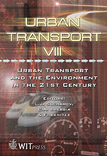Investigating The Possibility Of A Coordinated Goods Delivery Service To Shopping Centres In Uppsala City To Reduce Transport Intensity
Price
Free (open access)
Transaction
Volume
60
Pages
10
Published
2002
Size
463 kb
Paper DOI
10.2495/UT020191
Copyright
WIT Press
Author(s)
G. Gebresenbet & D. Ljungberg
Abstract
The current paper reports the results of the investigation made to determine the possibilities of promoting a coordinated goods delivery system to various galleria, located in the city centre, to reduce congestion and environmental impact. Uppsala is the 4th biggest city in Sweden and has a very narrow city centre. Increasingly frequent goods delivery performed by less than half-loaded distribution vehicles lead to the consequences of congestion, traffic accidents, and pollution, particularly in the city centre. It was assumed that a co-ordinated distribution system is among the plausible strategies to address the current problem. The objective of the work is investigate the possibilities of a co-ordinated distribution system in Uppsala city using a ‘city goods terminal’, which should be located at the suburb of the city. To reach the objective, the activities performed were: (a) mapping out goods flow to the four main galleria that are located in the city centre, (b) conducting a demonstration trial of coordinated distribution, and (c) determining constraints and possibilities of coordinated goods distribution. 97 transport companies delivered goods to these galleria. 15 to 60 deliveries were performed per day to each galleria and intensive deliveries were made before and during lunch. About 43’%0of the delivered goods were food including bread, brewery and daily products, fruits and vegetables and about 69% of food deliveries were made before 11 a.m. Queue time was significant and the actual unloading time was found to be less than 50°/0of the duration of the delivery.
Keywords





